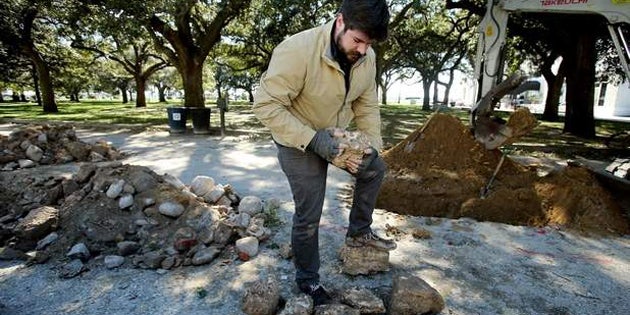College of Charleston historic preservation student Justin Schwebler is literally in the trenches proving his thesis.
Schwebler, who will earn his Master in Science later this year, is tracking and analyzing the use of Bermuda stone in Charleston, South Carolina. His research showed the stone was used as the foundation of the city’s original sea wall, built in 1769, and he wanted to prove it.
APPLY: Apply to the University of Charleston, South Carolina.
With the help of his professors in the joint master’s program between the College of Charleston and Clemson University, a dig was organized to uncover portions of the wall.
On the first day of the dig, Bermuda stone was uncovered, though not in the area believed to be the original sea wall.
Schwebler explains, “The stone is soft – it can actually be cut with a saw – so it is very possible the stone crumbled away after its lengthy exposure to water and waves.”
READ: Learn more about the dig in the Post and Courier.
Bermuda and Charleston had a strong trade relationship in the 1700s, with thousands of blocks of Bermuda stone coming into the Port of Charleston. That said, it’s now rare to find in the city, and even more rare in other U.S. locations.
“Bermuda stone is in at least two other notable places downtown,” Schwebler notes. “The ‘pink house’ at 17 Chalmers St. and ‘Pirate’s Courtyard’ at 145 Church St.”






